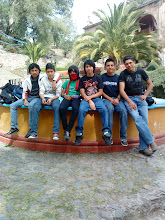- Classical. - Jazz. - House.
- Dance. - Pop. - R&B.
- Grunge. - Punk. - DIsco.
- Heavy Metal. - Rap. - Reggae.
- Hip - hop. - Electronic Rock. - Country
2nd step: Relate the lists: Styles of music with adjectives.
- Classical: Relaxing and slow.
- Dance: Animated, moved and euphoric.
- Grunge: Heavily distorted guitars and strong, catchy vocal melodies and repeated many times and changes of pace of the songs framed within the genre.
- Heavy metal: has powerful rhythms, raw and mostly aggressive, achieved through the use of highly distorted guitars, drums double pedal and powerful sound more complex than other genres, and basses pronounced, all added to a strong, dark atmosphere and technical solos guitar.
- Hip - hop: Has fast rhymes and more complex rhythmic structures.
- Jazz: Has a sound and phrasing that reflect the personality of the performing musicians.
- Pop: The main element of pop music is the song, often between two and a half and three and a half minutes long, usually marked by a steady and noticeable rhythmic element, a culturally established style and traditional structure and simple.
- Punk: Music is a very simple and crude, sometimes neglected, a single rock type, with simple melodies of short durations, guitar sounds or loud amplified poorly controlled, few arrangements and instruments, and usually beats, fast times.
- Rap: Is usually accompanied by a rhythmic background music. And uses the word "flow" to refer rhythms created by words and syllables.
- Electronic rock: It is characterized by the combined use of instruments related to electronic music and synthesizers, drum machine, samplers and instruments associated with rock and electric guitars, bass and drums.
- House: Mimics the percussion on the disc, especially the use of a prominent kick drum with every beat, but can also include powerful synthesized bass lines, electronic drums, funk and pop samples, and vocals enhanced with reverb or delay filters.
- R & B: It has been used to refer to rhythm & bass although the accuracy of this abbreviation is open to debate since the low part of the rhythm with the drums. Production style has a very neat and clean record, rhythms based on the use of drum machine.
- Country: Essentially played on stringed instruments like guitar, banjo, violin single (fiddle) and the bass, but also frequently involved the accordion (influenced by French to Cajun music), and harmonica. In the modern country are mostly used electronic instruments such as electric guitar, electric bass, keyboards and steel guitar.
- Disco: The disco songs were usually structured on a repetitive rhythm. The orchestral sound usually known as disco sound was based on the presence of string sections (violins, violas, cellos ...) and metals, which developed linear phrases in unison, following the instrumental base formed by the electric piano and electric guitar (with touches of funk clearly taken).
- Reggae: It is characterized by a kind of rhythmic accentuation of off-beat, known as the skank. Normally, the time of reggae is slower than ska and rocksteady. Reggae tends to accentuate the second and fourth beat of each bar, serving the guitar to put emphasis either on the third beat, or to keep the chord from the second to fourth. It is usually this "third beat" both the speed and the use of complex bass lines, what distinguishes reggae rocksteady.
3rd step: Paragraph of my favourite music style.
The electronic rock is a musical genre that was conceived in the 50's, which became popular after 60's. The electronic rock is characterized by the combined use of instruments related to electronic music and synthesizers, drum machine, samplers and instruments associated with rock and electric guitars, bass and drums.
From the late 60's bands like Silver Apples, The Doors, The Beatles, Emerson, Lake & Palmer began to use the Moog synthesizer in his compositions, but it was not until the mid 70's where its use was popularized even more among progressive rock bands like Pink Floyd, Yes, Electric Light Orchestra. On the other hand, krautrock was strongly influenced by the use of synthesizer bands like Kraftwerk, Tangerine Dream and Ash Ra Tempel
In the 80's, electronic rock was influenced by the arrival of new technologies such as MIDI and digital audio. Artists such as Gary Numan, The Human League, Depeche Mode and many others grew in popularity during this period.
From the late 60's bands like Silver Apples, The Doors, The Beatles, Emerson, Lake & Palmer began to use the Moog synthesizer in his compositions, but it was not until the mid 70's where its use was popularized even more among progressive rock bands like Pink Floyd, Yes, Electric Light Orchestra. On the other hand, krautrock was strongly influenced by the use of synthesizer bands like Kraftwerk, Tangerine Dream and Ash Ra Tempel
In the 80's, electronic rock was influenced by the arrival of new technologies such as MIDI and digital audio. Artists such as Gary Numan, The Human League, Depeche Mode and many others grew in popularity during this period.


No hay comentarios:
Publicar un comentario